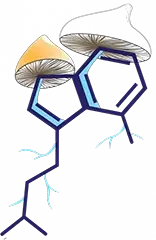LSD Guide: Methods, Doses, and Schedules
Introduction
Microdosing LSD has gained popularity as a practice that involves taking sub-perceptual doses of LSD with the aim of experiencing subtle cognitive and psychological enhancements. While anecdotal reports and self-experimentation have contributed to the growing interest in microdosing LSD, scientific research is still limited. Understanding the process of microdosing LSD, including methods, doses, and schedules, is essential for individuals interested in exploring its potential benefits. This article provides a comprehensive exploration of the process of microdosing LSD, drawing on available research and credible sources to guide individuals in making informed decisions about their microdosing practices.
What is Microdosing LSD?
Microdosing LSD refers to the practice of taking very low doses of LSD, typically around 10-20% of a standard recreational dose, with the intention of experiencing subtle effects without full psychedelic experiences. The desired effects of microdosing LSD include increased focus, enhanced creativity, and improved mood. While there is no universally accepted definition or standardized protocol for microdosing LSD, self-report surveys and anecdotal reports from microdosers provide insights into the objectives and experiences associated with this practice. Research by Anderson et al. (2019) explores the definition and practices associated with microdosing, contributing to a clearer understanding of this phenomenon.
Methods of Microdosing LSD
Oral ingestion is the most common method of microdosing LSD, typically in the form of liquid LSD dropped onto blotter paper or diluted in a solution. The blotter paper or solution is then ingested orally. Sublingual administration, where the LSD is held under the tongue, is another potential method, allowing for faster absorption into the bloodstream. Transdermal patches, although less commonly used, are being explored as an alternative method. Research on different administration methods for LSD microdosing is limited, but studies on psychedelic substances like psilocybin suggest that oral ingestion and sublingual administration can yield similar effects (Buchborn et al., 2018). Factors such as bioavailability, onset of effects, and personal preferences should be considered when choosing a method of administration.
Determining the Microdose
Determining the appropriate microdose for LSD microdosing involves finding the lowest dose that produces subtle effects without inducing full psychedelic experiences. Individual sensitivity, body weight, and desired outcomes play a role in determining the optimal microdose. Typical microdoses reported in the literature range from 5 to 20 micrograms of LSD. Research by Hutten et al. (2021) examined self-reported microdosing practices and found that doses between 6 and 20 micrograms were commonly reported. It is important to start with a conservative dose and gradually adjust based on personal response. Self-experimentation and careful observation of the effects are crucial in finding the optimal microdose for each individual.
Establishing a Microdosing Schedule
Consistency in microdosing is important for individuals to assess the effects and potential benefits accurately. Different scheduling approaches have been reported among microdosers. The Fadiman protocol, proposed by James Fadiman, suggests a schedule of one microdose every three days, followed by two days off. Other individuals may follow personalized schedules based on their specific needs, goals, and lifestyle. Some microdosers prefer a more frequent schedule, while others may prefer a less frequent regimen. Personal experimentation and self-reflection are essential in determining the most suitable microdosing schedule. Research on optimal dosing schedules for LSD microdosing is limited, but self-report surveys and qualitative studies have provided insights into the diverse scheduling approaches used by microdosers (Polito & Stevenson, 2019).
Self-Experimentation and Personalization
Self-experimentation and personalization are key components of microdosing LSD. Since there is no one-size-fits-all approach, individuals need to engage in trial-and-error to find the optimal microdose and schedule that aligns with their specific goals and preferences. Self-reflection, careful observation of the effects, and keeping a journal can help individuals assess the benefits and make adjustments accordingly. Each person’s response to microdosing LSD may vary, and it is important to consider factors such as individual biochemistry, mental state, and external factors like set and setting. Research by Bershad et al. (2019) emphasizes the importance of individual factors in determining the subjective effects of psychedelics. Self-experimentation allows individuals to fine-tune their microdosing practices for the best possible outcomes.
Potential Benefits and Limitations
Anecdotal reports and self-reported surveys suggest various potential benefits associated with microdosing LSD, including increased creativity, improved focus, enhanced mood, and heightened well-being. However, it is important to interpret these reports with caution due to the placebo effect, expectancy bias, and individual variations in response. Rigorous scientific research on the benefits of microdosing LSD is limited, and controlled studies are needed to validate and understand these reported benefits. Research by Davis et al. (2020) highlights the limitations and challenges in assessing the effects of microdosing psychedelics, including sample sizes, placebo-controlled designs, and blinding procedures. The subjective nature of the reported benefits also adds complexity to the evaluation of microdosing effects.
Responsible Use and Safety Considerations
Responsible use and safety considerations are crucial in microdosing LSD. Obtaining reliable and accurately dosed LSD from trustworthy sources is essential. Testing substances for purity can help ensure the absence of contaminants or adulterants. It is also important to be aware of potential interactions between LSD and medications, as well as any pre-existing medical or psychiatric conditions. Set and setting, which refers to the mindset and environment in which microdosing occurs, should be carefully considered to create a safe and supportive context for the experience. Integration and self-care practices, such as meditation, exercise, and journaling, can contribute to a holistic approach to microdosing LSD. Responsible practices and informed decision-making are key to maximizing the potential benefits and minimizing potential risks.
Conclusion
The process of microdosing LSD involves careful consideration of methods, doses, and schedules. While anecdotal reports and self-experimentation provide insights into the practices and potential benefits of microdosing LSD, rigorous scientific research is still needed to validate and understand its effects. Individuals interested in microdosing LSD should approach it with caution, informed decision-making, and responsible use. The exploration of different methods, determination of the appropriate microdose, establishment of a personalized schedule, and self-reflection are integral parts of the microdosing process. Continued research, responsible practices, and open dialogue will contribute to a better understanding of microdosing LSD and its potential role in enhancing cognition, creativity, and well-being.
Shop online with Shroomhub – Canadian Magic Mushroom Dispensary
Shroomhub is your most trusted online magic mushroom dispensary in Canada, dutifully providing quality products at the most competitive prices to customers across all territories. Our broad product range includes everything from micro-dose mushroom capsules to Psilocybin containing dried mushrooms, and even extends to LSD products and DMT. Shop online today and take advantage of our low prices and rest easy knowing the Shroomhub team as your order taken care of. Have confidence in us and buy shrooms online today!



